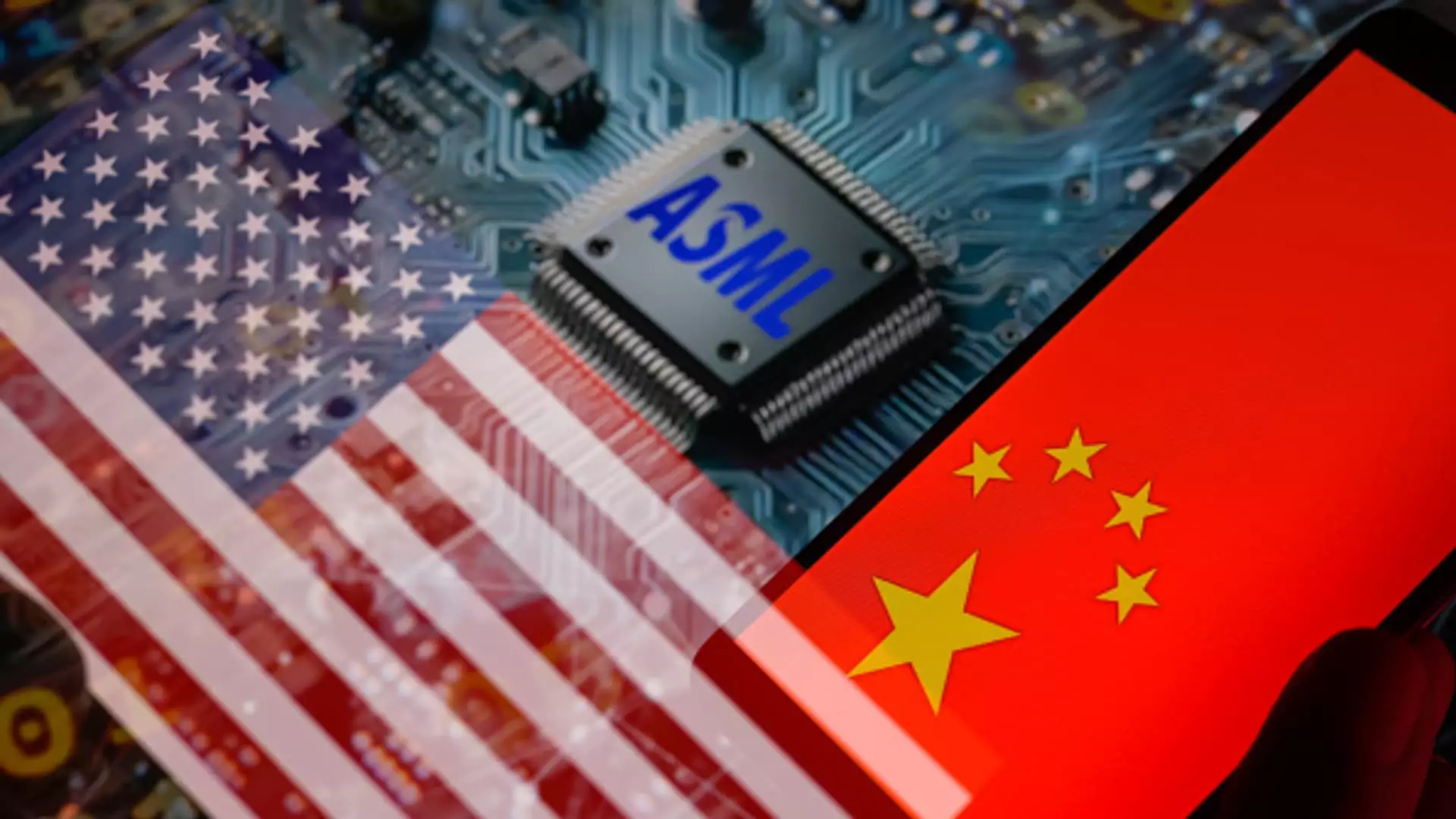ASML, a key player in the semiconductor industry, recently shed light on how U.S. export restrictions are affecting its business strategy and revenue forecasts in China. The disclosure, made during the company’s earnings report, highlighted significant concerns among investors regarding the future of chip manufacturing supply chains and the implications of geopolitical tensions. In this article, we will explore ASML’s current standing, the effects of these restrictions on its sales, and the broader ramifications for the semiconductor industry.
In its earnings report, released a day early due to a technical error, ASML anticipated net sales between 30 billion euros and 35 billion euros ($32.7 billion to $38.1 billion) for 2025. This projection, however, was disappointing for the market, falling in the lower half of previous guidance. Despite reporting quarterly net sales of 7.5 billion euros, exceeding expectations, ASML’s net bookings revealed a stark contrast—coming in at only 2.6 billion euros, which was markedly below the anticipated 5.6 billion euros.
Following the earnings announcement, ASML’s shares experienced a dramatic decline, falling as much as 16% in a single day. In mere hours, the company’s market capitalization sank by over $50 billion, a testament to investor anxiety regarding the company’s future in the rapidly evolving semiconductor landscape. This sharp drop was primarily attributed to underwhelming bookings linked to major customers like Intel and Samsung, which have reported weaknesses in their respective markets.
Geopolitical Pressures and Market Adjustments
The geopolitical landscape is increasingly becoming a focal point for companies like ASML. With the U.S. implementing stricter export controls on advanced chip manufacturing equipment, ASML’s China business is projected to reflect a “more normalized” share in its order book, according to CFO Roger Dassen. UBS analysts have pointed out that this downward adjustment in sales expectations to China could signal a decline of 25% to 30% in 2025 when compared to earlier projections.
Notably, ASML has never supplied its advanced extreme ultraviolet lithography (EUV) machines to Chinese customers due to prior export restrictions. Instead, Chinese chip manufacturers have relied on ASML’s deep ultraviolet lithography (DUV) machines, which, although not as advanced, are crucial for producing essential chip circuitry. A significant development has seen ASML’s DUV sales surge as Chinese companies sought to stockpile these machines ahead of impending restrictions.
Historically, China’s contribution to ASML’s revenues has been substantial; last year, it accounted for nearly 29% of total sales. However, projections now indicate that this percentage may dip to around 20% by 2025, underscoring a significant shift driven by geopolitical tensions and market dynamics. This trend highlights the long-term uncertainties facing the industry, especially as ASML grapples with its dependency on Chinese customers.
The rapid growth in sales from China experienced in the first three quarters of 2024, where it comprised up to 49% of ASML’s sales, is expected to decline sharply as U.S. and Dutch restrictions tighten. Recent moves by the Netherlands to expand export regulations have introduced an additional layer of complexity. The Dutch government is now overseeing the licensing of ASML’s equipment, which raises barriers for the continued operation and sales of DUV machines in the Chinese market.
Future Implications and Industry Insights
The ongoing U.S.-China trade tensions and the imposed restrictions on chip technology manufacturing are creating an uncertain forecasting environment not just for ASML but for the industry as a whole. Analysts project a significant revenue decline for ASML’s China operations, with estimates suggesting as much as a 48% drop year-on-year, significantly harsher than the previously anticipated 3% reduction.
Furthermore, experts like Abishur Prakash emphasize the precarious nature of ASML’s reliance on the Chinese market. Prakash points to the potential for declining demand as ASML faces increasingly stringent export controls. With China’s chip market accounting for a substantial share of global production, the ramifications of such restrictions could extend well beyond ASML, affecting various players in the supply chain.
The implications of U.S. export restrictions are reshaping the landscape for ASML and the broader semiconductor industry. As the company navigates these challenges, it must recalibrate its strategies and expectations to align with the changing dynamics of global trade and technological advancements. The coming years will be crucial for ASML as it adapts to this new reality and seeks to maintain its pivotal role in the global chip supply chain while addressing the complexities posed by geopolitical tensions.

